Future Intel x Operator

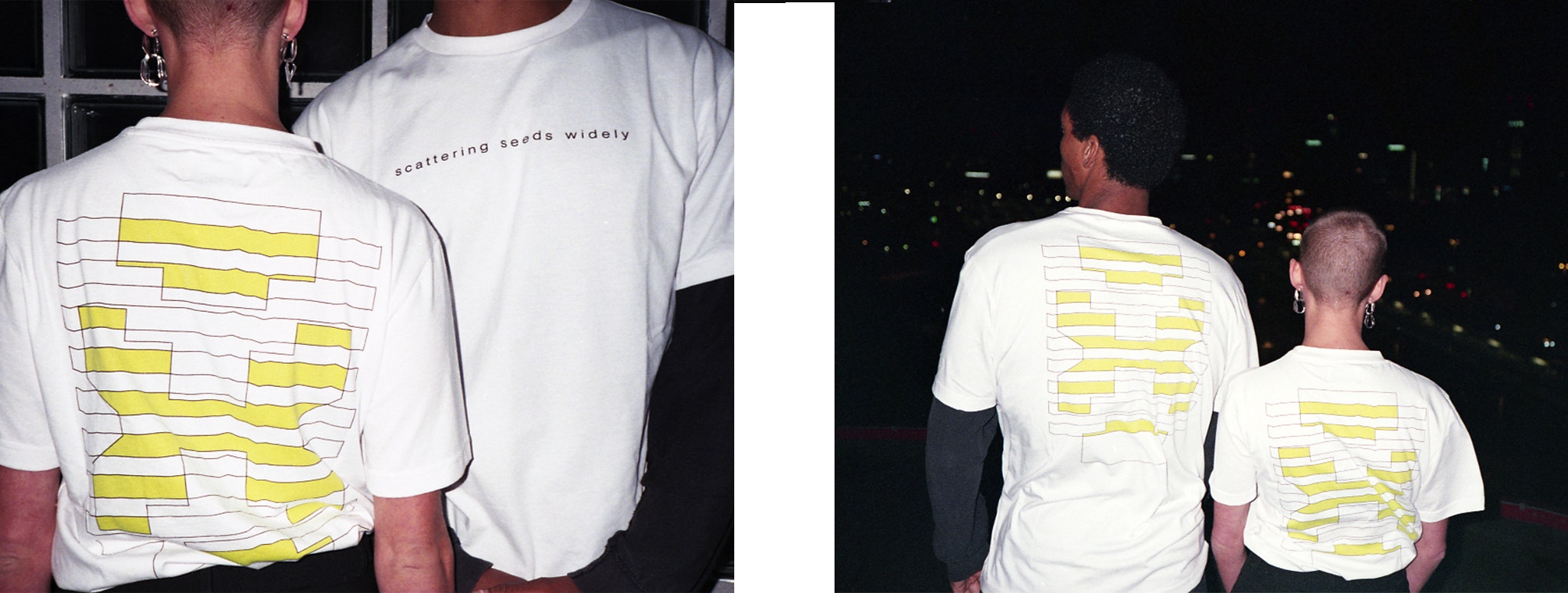
Future Intel x Operator
A Writer’s Preface
Operator and Future Intel are organizations I am personally involved with. I started volunteering as a host at Operator in May 2021 and became involved as a writer at Future Intel in August 2021.
I have experienced what I describe in this article – the “power of community” – first-hand. There is tension as a writer to make things sound attractive, to manufacture language that appears glossy and marketable, but I would like to express the authenticity of my feelings towards what is written below. Music, for many years, was a solitary venture for me. My journey through music was profoundly shaped by the internet; and while this gave me a sense of community, it was one that was abstract. I felt deeply connected to the music I loved; the radio-shows I listened to, the DJs I admired, but there was an inherent distance – not only were these figures and the communities that surrounded them completely scattered across time and space, but they were also always virtual. I experienced proximity to music – experienced the purity and integrity of the bond created between those that love music – talking with label-owners, club-programmers, DJs, musicians, record-collectors, etc. – for the first time at and through these radio-stations. In short, I experienced a real community around music at and because of Operator and Future Intel.
The launch of this shirt, and the collaboration it entailed between both teams and designers involved with Operator and Future Intel, presented itself as a perfect opportunity for me to interview and explore two organizations that have been incredibly meaningful to me. As a writer, my goal is to form an understanding; to hear from the makers themselves, and then to express things that are often unspoken and implicit; to examine and put into language the nuances and intuitive aspects of an artwork, which, in this case, involve the creation of two different radio-stations – one in Rotterdam in 2017, one in the Hague in 2020 – and the shirt created through the collaboration of two designers, Nicole Martens (NM) and Sjoerd de Ridder.
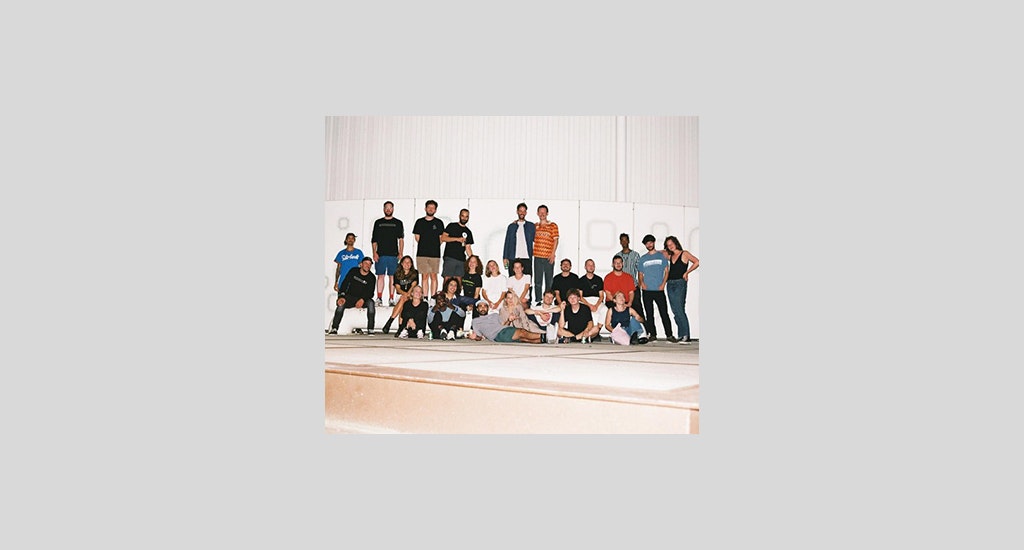
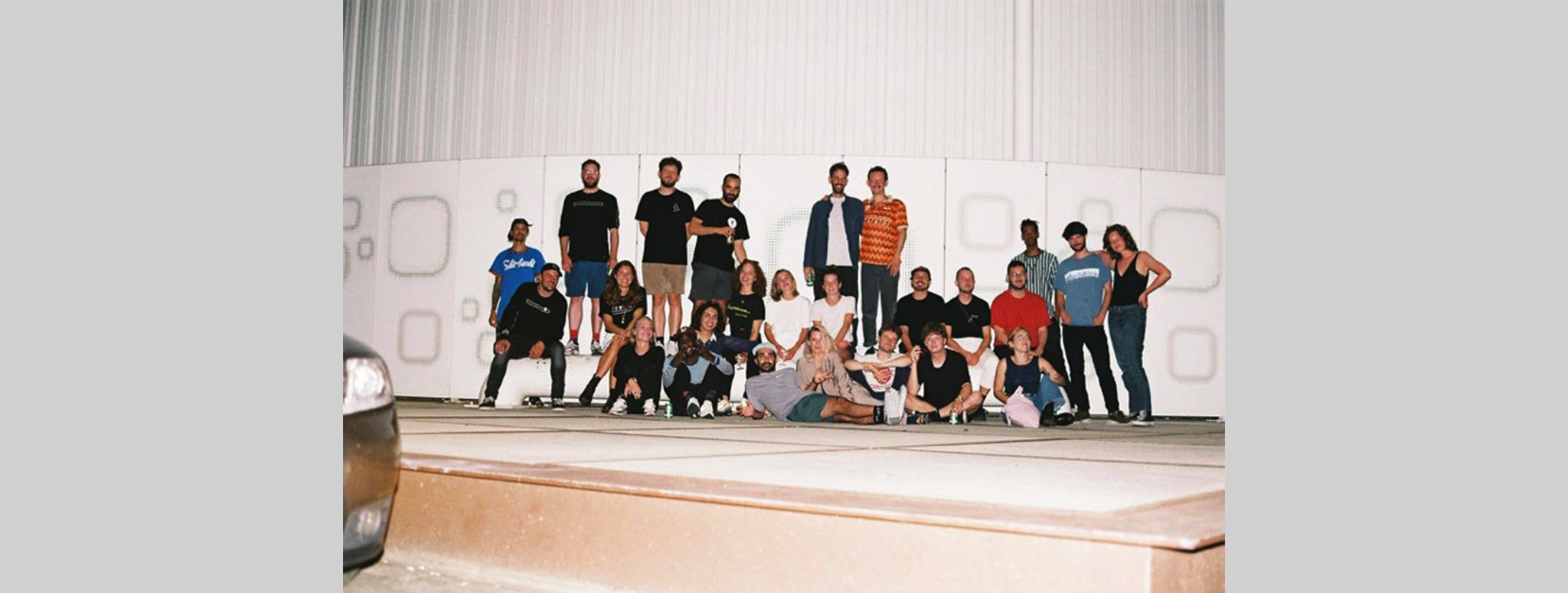
Operator
Things Fall Apart: Creation, Destruction, & Rotterdam
Rotterdam is a peculiar city. It is shaped by an awareness that things can, and often will, be taken away from you. This sense emerged in part due to the destruction of the city in World War II, in part due to the spectacle and immensity of its reconstruction as the most important harbor-city of Europe in the early 1980’s – and with it, the pervasive anxiety caused by the economic crash and dilapidated state of the city that followed – but foremost by the effect these vast fluctuations had on the municipality of Rotterdam: the push towards continuous economic growth that emerged because of it. A misguided growth that comes at the cost of nourishing what already exists in Rotterdam: that which actually attracts and inspires.
Slogans such as ‘Make it Happen’ appear as condescending and deeply misguided in this context: they feign a support for DIY culture, though the municipality is known for putting corporate interests first, all while shutting down locally-developed cultural hubs (any Rotterdam-based reader will, at this point, somewhat tearfully think of BAR); not looking within or understanding the value of what already exists. As if the creative spirit of Rotterdam can be distilled and expressed by inviting an outsider institution such as Eurovision; as if Rotterdam isn’t already known around the world, not for the corporate aspects of its cultural sector, but for the vibrancy of its ‘underground’ culture. Indeed, the frequency in which words such as ‘underground’, ‘DIY’, and ‘self-made’ are used here is almost alarming because it reveals a widely-felt awareness that a good idea has to be nourished from absolutely nothing; that no high-level support will be given; that you must hide and shelter your idea from the municipality in order for it to survive; that the only option to create an interesting cultural venue or event in Rotterdam is to roll up your sleeves and do it yourself, and at that, at your own risk.
Rotterdam is always on edge. On an individual level, the constant fluxes of creation and destruction (whether at the hands of the municipality, large international corporations, financial crises, or war) create a wide and intense array of emotion. The feelings of disorder and emptiness that emerge once a place has been torn down; once a scene has been dispersed and briefly disappears, feeds immense energy and restores a clawing hunger for collectivity. It constantly reminds you of the power and value of community. If anything, it teaches Rotterdammers to resist.
Operator speaking
Operator is a hybrid space. Started in 2017 by five friends and creatives within the music world – Ofra Beenen, Jeff van Hoek, Patrick Marsman, Osman Bas, and Jorn de Vries – it has grown to be a space beyond any tangible physical or digital confines. It can be accessed as an online platform from around the world, either live, or through the immense quantity and care of its archive on mix/soundcloud, but it also provides a physical meeting space, not only through its ‘shipping-container’ (which itself is known for constantly spilling out of its confines with friends, other DJs, and Operator volunteers), its external events and parties, but also through the connections it creates between real human beings.
What stands out most about Operator within the Netherlands is the density, breadth, and strength of its community. As a platform, it brings together: collects and nurtures. By allowing for a balance of physical and digital space, it creates a stage waiting to be filled. ‘Ask and you shall receive’ – with programming running Tuesdays to Saturdays, noon to 10pm, and plenty of events across the city, Operator provides ample space for varieties of sounds and levels of experience. Importantly, it offers a stage to those without much prior practice spinning in clubs but with a genuine love of music. This kind of ‘talent development’ is only possible within a space that gives you room to breathe and be; that provides support, community, and kinship. Many DJs that come from Rotterdam, no matter their current level of experience or recognition, have frequently played at or volunteered at Operator. If anything, Operator often feels like the social artery of music within the city.
In this context, the force of the community almost seems an answering call or retort to the severity with which the music scene here has constantly been dispersed. Its name too, rings true of the hybrid anxious/pure, nerdy spirit of Rotterdam: in part direct, concrete, and commanding; also: simply a reference in-joke to a line from The Matrix – “I’m Tank, I’ll be your operator.”
A lot has been written about Operator over the last four years. Whilst creation stories may be interesting, what is much more interesting is to highlight and describe the community that has grown around the station and to relate how the space itself feels. While this sort of description is inevitably subjective, my experience of Operator was that of a newcomer, and at that, during COVID-19, with no preexisting ties to the station, those involved, or the music scene within the city itself. I feel qualified to generalize my impressions of the space as I entered and experienced it from an outsider’s perspective, with a clean slate.
Regardless of my lack of prior involvement within the local music community, Operator immediately felt incredibly warm and personal. Its community at this point – after nearly 5 years – involves everyone’s partner, dog, parent, best friend. It is hard to walk across Rotterdam; to be anywhere in the city too long, without running into someone you know through the station. This kind of vast community; this net of artists across a city, is something that is timeless, described countlessly across centuries. It is a joy to experience the ease and purity with which friendship and love for music is shared across Rotterdam through Operator.
NM: Homages to the Early Internet, Pirate Radio, and to Community-Driven Platforms
Nicole Martens (NM) is a graphic and visual artist, a DJ, and a teacher of graphic design at the Gerrit Rietveld Academy in Amsterdam, among many other things. She has been intimately involved in the music scene in Rotterdam since the early 2000’s, experiencing the fluctuations of the city’s attitude towards music and the creative sector first-hand. Her involvement in Operator came about organically, just as it did for the other crewmembers: they used to bump into each other across the city and recognized the potential for organizing around a natural cluster that had formed. Back in the days when Operator-cofounder Ofra was part of DJ duo Hollywood & Vine, Nicole was in her own DJ duo, Strange Boutique with Femke Dekker, now DJing under the moniker Loma Doom. Nicole and Jeff organized a party where in 2011 at the venue that BAR would later emerge out of, a year prior to BAR becoming BAR, when the venue was still called de Dependenace and used mainly for debate, lectures, and presentations. In short, Nicole has been around since the very beginning.
Nicole and I share a fascination and love for the DIY, anti-institutional nature of early digital platforms and pirate radio. Pirate radio – radio broadcasted unofficially, often illegally and contrary to the dominant sounds and politics of a region – gained massive traction throughout the 1960’s, and again in the 1980’s and ‘90’s. Music-based pirate radio, and later, early internet broadcasts and communities within spaces such as peer-to-peer file-sharing platforms Soulseek and Limewire, as well as online forums, emerged from a simple, shared impulse: wanting to share music with others, spread a love for music without any political, economic, or social barriers; create a space to exist in music with and for each other. The value of this comes not only from the unique and free curation of the music itself, fueled by the hunger and acceleration of discovery afforded by the internet, but also from the communities created around the sound: the ability for people to recognize themselves within a larger idea and to gather to share in it together; form structures outside of what was common or allowed.
Anarchy on the internet – many modern independent radio-stations can be traced back to this explosion in the 90’s, when it suddenly became possible for anyone to broadcast anything they liked. The natural clusters of taste and like-minded individuals that formed, the esoteric ‘voices’ that emerged, and the shock and glee of community quickly experienced by those within these new-founded digital spaces, created a boom of internet radio-stations across the world; it was in this context that stations such as DubLab (founded in 1999), Intergalactic FM (formerly Cybernetic Broadcasting System, 2002), and later, NTS (2011) were formed. Creating an independent online radio-station allows for a balance between structure (i.e., context, already having an audience) and individuality, freedom. Operator is not a tool to propagate any single person’s sound. It is not an institution but a shared space – a platform with room for you to join. This balance allows for an interesting flow of in/output: it collects and gathers; nurtures new voices and creates space for one to develop within a community, as much as it broadcasts, pushes back; disperses sounds into the unknown.
It is with this in mind that Nicole designed Operator’s visual identity. Inspired by the web-design of the early internet – simple graphics, a bold use of color – it mirrors the dual direct/nerdy nature of the station. It is a beautiful, powerful work of graphic design; effective and commanding no matter whether you understand the context. It is also steeped in symbolism: a reference to the hybridity of Operator – a literal blend of analogue waves (smooth and continuous) and digital waves (stepped and discrete). In her own words it “salutes the community-driven pioneers that created web access for all and enabled independent online radio culture as a new DIY publication tool.” Couldn’t have said it better myself.
Anyone interested in further understanding the nuances of Nicole’s design practice, should take a look at her website NM in which she carefully details the precise methods, meanings, and histories of her artworks. Clearly, she is an artist interested in context and implication, and given my perspective of wanting to understand something through real experience, it was a pleasure to pick her brain for a few hours one rainy morning. Many of my impressions of Rotterdam were synthesized and brought into sharp relief through my conversation with her.

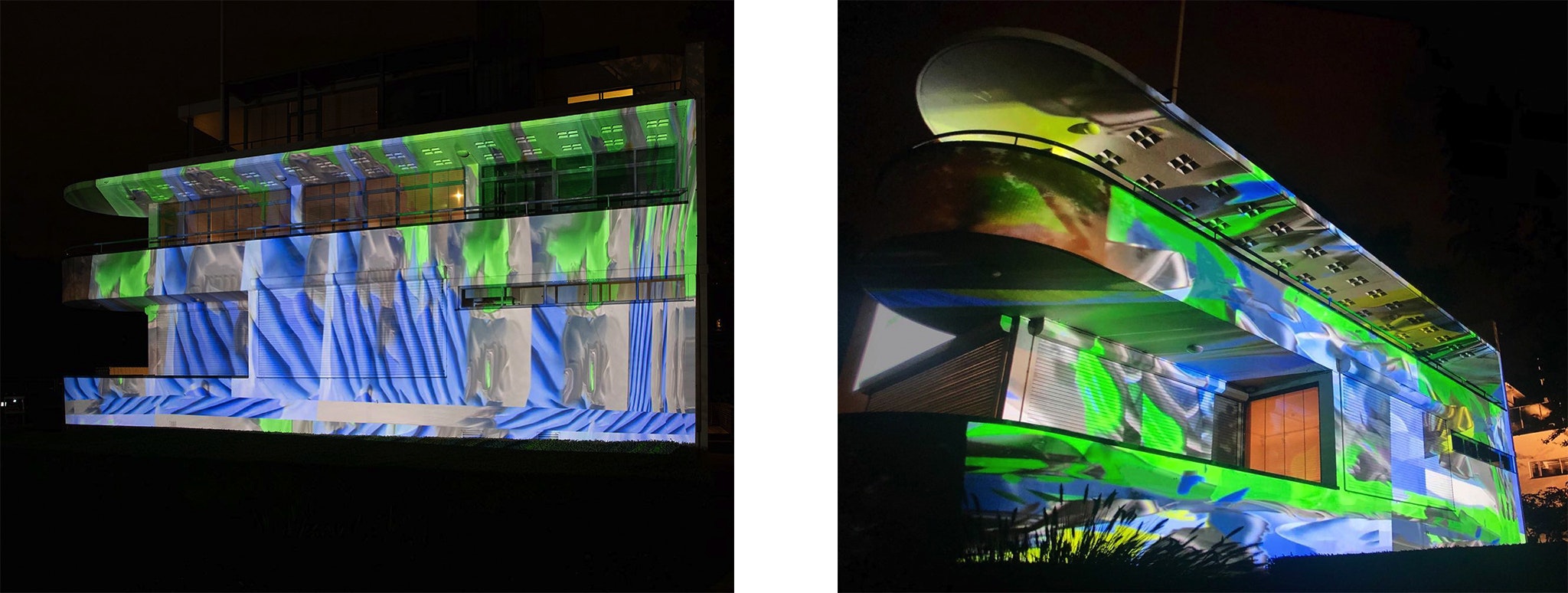
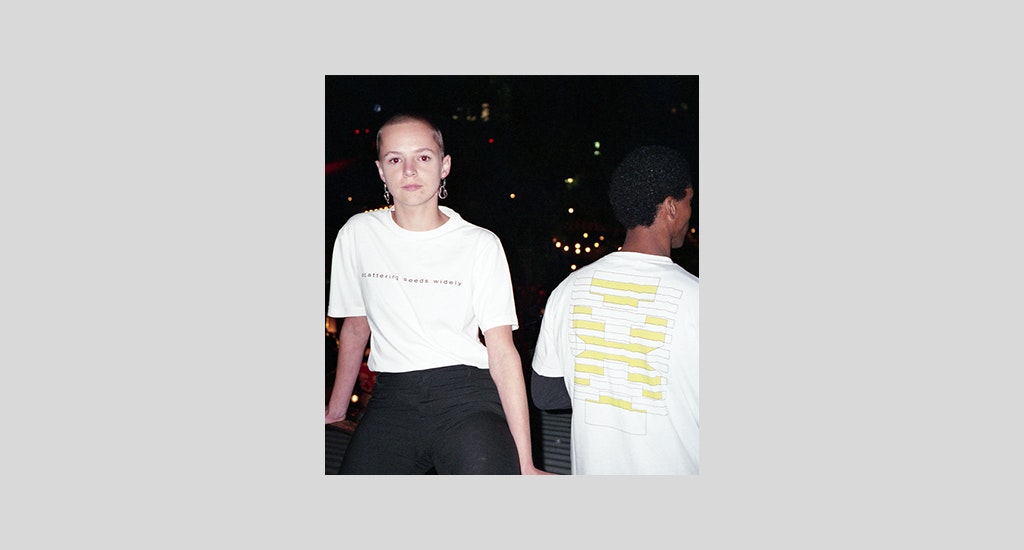
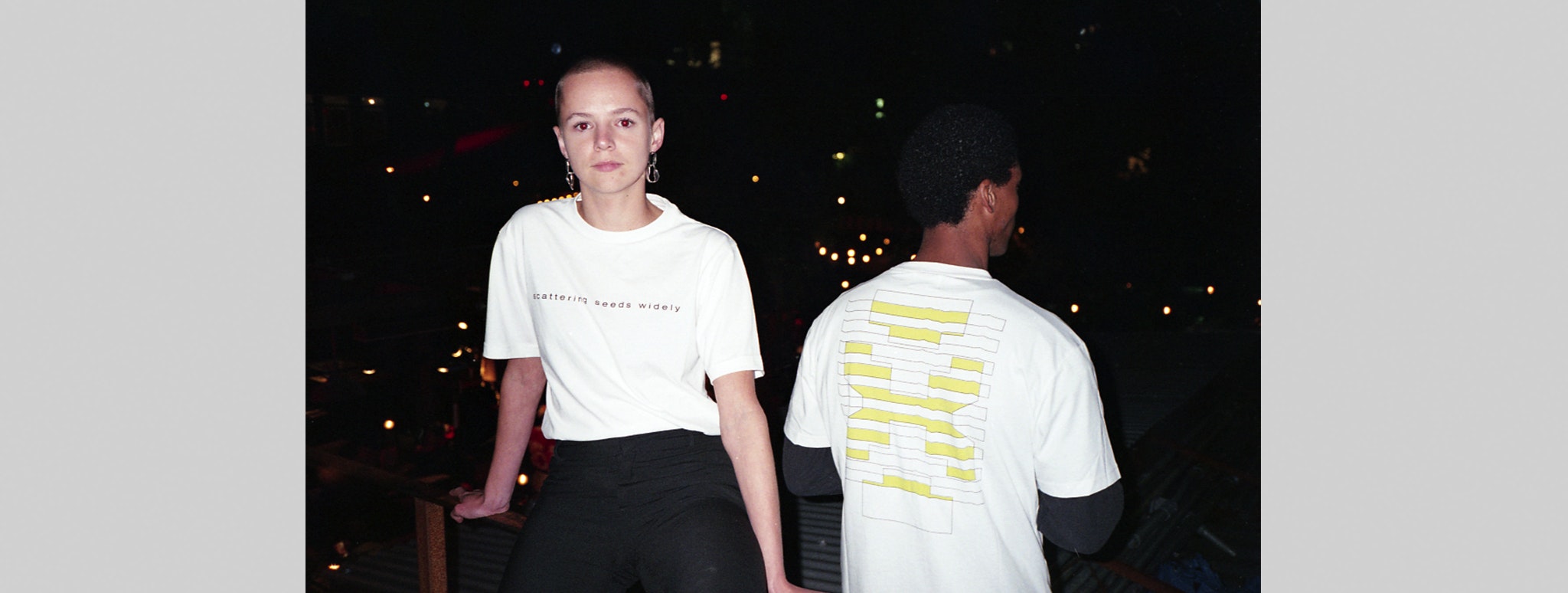
Future Intel
The Best Way to Predict the Future is to Create It: Intuitive Precision, Trust, and Soup in the Hague
Future Intel is an independent radio-station focused on experimental music and visual art in all its forms. Based in the former KPN office-building within the industrial quarter of the Hague and founded by Zamba-Jan Bakana, Mounir Gros, and brothers Olivier and Wouter van Driel in early 2020, it grew from an idea to create a space that transforms fluidly between sight and sound – part radio-station, part digital exhibition space. The station quickly piqued the interest of the Dutch music community for the unconventional nature and life of its project. The team went on to collaborate with Dekmantel; first, in the form of an HQ takeover in April of 2021 Livestream Dekmantel at Future Intel next, as a boat-party at Dekmantel Selectors in Tisno, Croatia this past August; a party which involved a crowd dancing so wildly that the wooden floor of the boat began to shake beneath our feet. The station was also invited to stream as part of ADE in both 2020 and 2021 and has frequently welcomed take-overs by other groups and musical communities across both the Hague as well as the wider Dutch cultural landscape; hosting labels, fellow radio-stations, collectives, and clubs such as Nous’Klaer, Traumgarten, Garage Noord, Radio Tempo Não Para, Onderwereld, KLAUW, Clone, and – of course – dear Operator.
With a multi-camera set-up, a strange, cinematic venue, and two talented art curators – Yasmine van Maasakker and Tessa van Bree – under its wing, Future Intel stands out within the Dutch radio landscape for its keen eye and dedication to exploring the visual and artistic possibilities within online radio-streaming platforms. Twice a month, a new artist is invited to share their work, which is then enmeshed into the recording of the set of DJs playing. The selected artworks range from short films, animated media art, glass sculptures, and light design, to live performances by tattoo artists – or, abandoning all pretense of strict boundaries between music and visual art altogether – audiovisual experiments that blend the two seamlessly, such as the streams of UMBRA (live, shadow-based A/V by Zalán Szakács, Mark Ridder, and Nikos ten Hoedt), or the absolutely stunning, recurring show, Yopo & Timaeus Explore…, which experiments with the boundaries of radio by pairing sonic narratives with digital worlds; creating a visual counterpart to the emotional journey that occurs as one explores music, expanding reality with one’s own imagination.
Intuition, Precision
While this sort of name-dropping can serve to contextualize an organization, it is ultimately useless in understanding what is unique or important about the space or project itself – the feeling you get at Future Intel; the heart and unique ‘sound’ of the space. Whereas Operator was purposefully built to incorporate elements of open-source, community-driven platforms – built to function as a social space as well as a radio-station – Future Intel, undeniably, has a scope that is more limited; more specific, and therefore too, less readily accessible and open.
On the one hand, Future Intel is inhibited by practicalities: it has fewer slots available than other radio-stations and is geographically isolated in the industrial desert of a city; it streams only at night, two to three days a week, and there’s no bar or restaurant close by, no place except for the train-station to walk towards after. It is an island onto itself, with the stubborn peculiarity and unique nature that comes along with this implication. On the other hand, the limit and specificity of its scope is not something the station hides from or denies. It is both physically and conceptually isolated, and this is a core part of its identity. Though Operator and Future Intel have what is most essential in common, sharing a love for music and understanding the value of pouring time and energy into creating a space around it, there are distinct nuances that differentiate the two. They are not trying to do the exact same thing; their approaches, contexts, and communities vary. And thank God for that. How boring it would be if we all copied each other!
Yet – how exactly does one give language to the specificity of Future Intel? Describe the scope of the ‘certain feeling’ Future Intel is chasing after? One can start by saying: its sound is slippery, amorphous, but is always carefully selected. This selection is not made by status or by the level of experience of the DJ, but through something even more slippery: an intuitive sense that a sound simply works within the context of what the station currently is; where it is trying to go, and what it is trying to say. In this way, Future Intel is an artistic project in and of itself, as much as it is a platform to broadcast music on. Whatever it is that Zamba, the station’s programmer, senses in the sounds he programs; it’s working.
The balance between selection and exclusion, curation and ‘gatekeeping’ – who gets to decide what to include and why – is, of course, delicate, and it would be a missed opportunity not to acknowledge its complexity within a station that uses intuition and purposefully fluid language to describe what it looks for. It’s hard to permanently pin down what exactly Future Intel searches for in its artists and DJs, firstly because this is constantly changing, and secondly, because the whole station was built around a love of being surprised. As much as this affords real, palpable freedom to artists, encourages them to express themselves in the knowledge that they were asked to play because of their individual spirit; that there was something interesting and beautiful about their personal sound that the station wanted to give room for them to explore, it also allows for warranted criticism to be made against the murkiness and ambiguity of its selection-process; perhaps to criticize the necessity of a selection-process at all. Fundamentally, however, the station was neither built to untangle the complicated politics of curation, nor is it realistically capable of doing so. It was simply built. The particular ‘curation’ of the station is simply the effect of the playful, earnest intuition that a group of people share; an intuition which allows one not to think too much about why something works, but to sense and trust it; see where it leads; to explore what exists past its boundaries, and (here we have arrived at the origin of the station’s name) to ignore what is dominant in the present, look into the future, sense its contours, and shape it yourself.
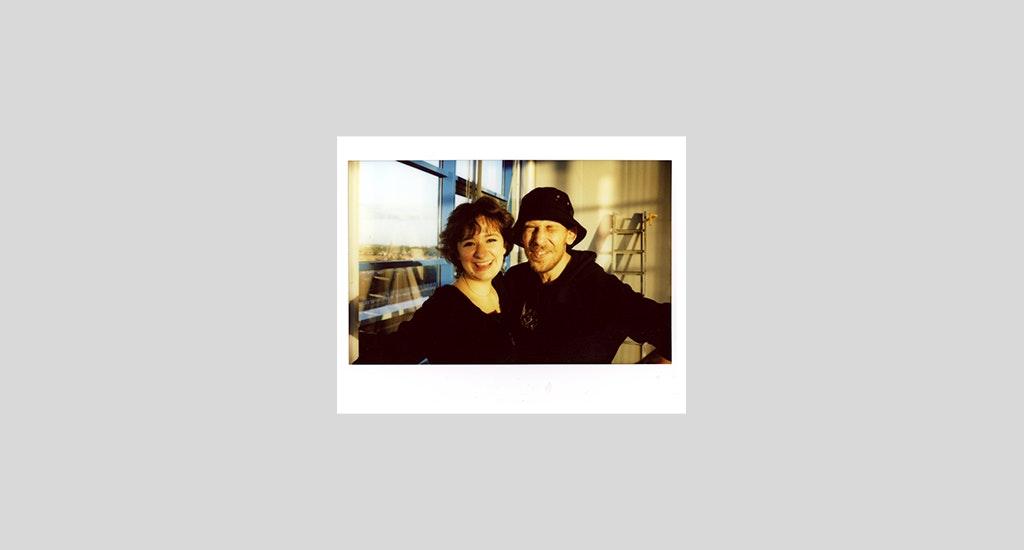


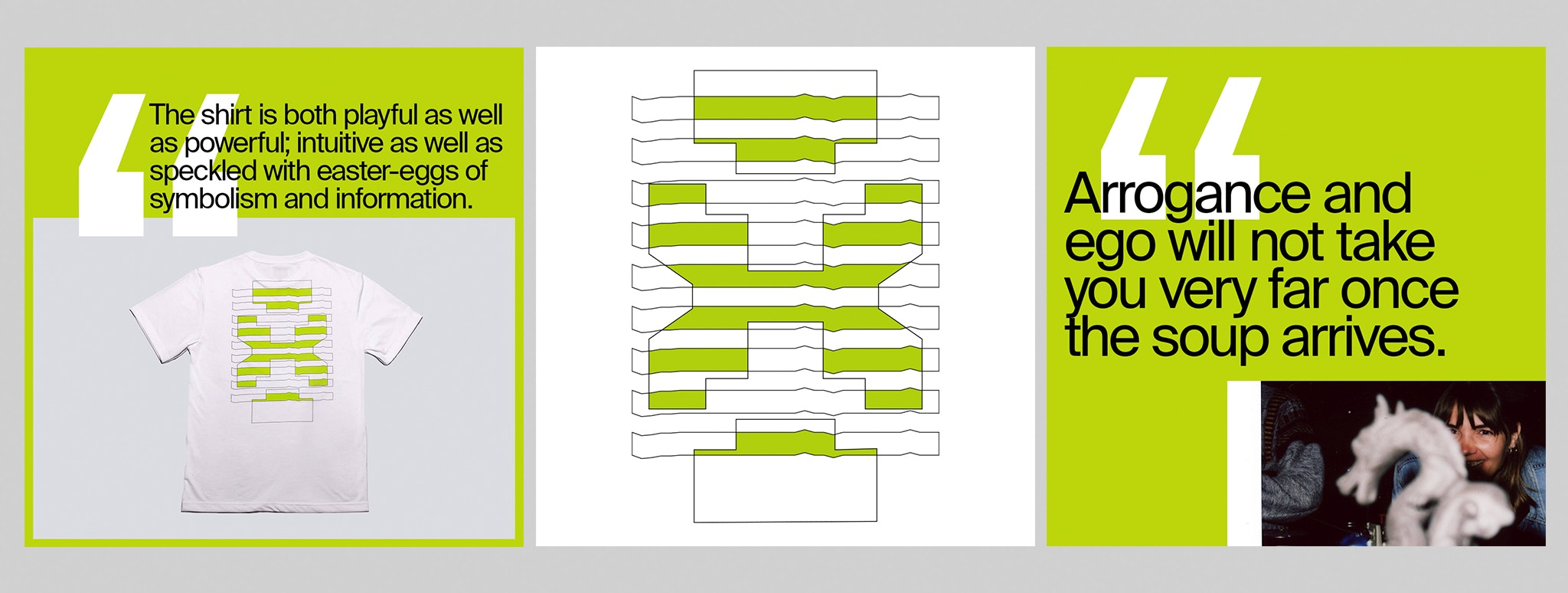
Trust, Heart, Soup
Phrases such as ‘a certain sound’ or a ‘a vision of the future’ may come across as pretentious, hostile, or condescending, but anyone who has spent time at Future Intel will know that the team and the feeling of their project is anything but. As earnestly as the scope of its sound is adhered by, the team does not take itself too seriously. Future Intel is not based on heady theory or influenced by what is seen as ‘cool’ or ‘good’ by outside communities. It is guided by a level of trust in one’s own intuition that approaches real purity in just how simple it is. A red thread of tongue-in-cheek humor, warmth, and playfulness can pervade the space because of this simplicity. For example, the use of a motion-activated wild-life camera to take pictures of DJs as they pass and the decision to use these images as SoundCloud set-covers (which are then arduously leafed through to find sweet or funny moments that capture the spirit of the day; e.g. Zohar’s cover being one of her dog running, eyes glowing in the dark, and nothing else) demonstrates that there are pockets of near self-deprecating humor (“Don’t take me too seriously!”) and hidden effort scattered across Future Intel. The team stays close to its concept and so it feels simple and instinctive; unravels itself to you. When it comes together, when it’s happening right in front of you, you are bound to sense it too.
This trust for a particular intuition, this dance towards a path somewhere off in the distance, spills out across the rest of the organization. Future Intel is a small team. There is a lot of value in ‘what feels right.’ Volunteers join by accidentally dropping in sideways; coming across the team or station and sensing something which resonates with them. The same trust is also translated in the intensity with which time and hands-on work is devoted to the station by its founders in order to keep it running. It is hard to understand just how much it takes: Pots of vegetarian soup are cooked from scratch each night by Mounir to feed all hungry guests, drinks are plentiful and always on the house, and, most unbelievably, all equipment and furniture must be pulled out of a side-room, set up at the beginning of each night, only to be built down and wheeled away when the clock strikes midnight. It is a demanding way to run a platform; a lot of work and belief in what it all comes to is necessary of those intimately involved, but it is also a warm, passionate, and equal space to exist within. Things happen as you let them happen here; it is your passion and not your status that moves you into new experiences, moves you into conversations with new people. Arrogance and ego will not take you very far once the soup arrives.
Ultimately, it is the simplicity of and dedication towards its intuition that shields Future Intel from becoming pretentious in its quest towards ‘a certain sound.’ It is what makes it so special; what makes it feel like such a pure and supportive space. People play the first set out of their bedroom at Future Intel. They are invited to perform live, to toy around and experiment with their sets, and especially, to push back against the boundaries of what is expected of a DJ when they come up to play. Whether this entails Danny Wolfers (of Legowelt) and Jimi Hellinga (a medieval instrument expert) playing live as Zandvoort & Uilenbal (ambient drone, recited poetry, and a hurdy gurdy in the DJ booth!), or Serge playing nothing but songs related to James Stinson for an hour (in dedication to his creative spirit, but also with a nod to the anniversary of his passing being the same date as Serge’s set) you are invited to be as nerdy, weird, and esoteric as you feel like being here. It is a space where both nothing and everything will surprise you because you have learned to relinquish your expectations, to simply pay attention and listen. It is a space in which it’s perfectly fine to drop a pop-y, rhythmic Throbbing Gristle song in the middle of your ADE set (Mark Knekelhuis), to close with a sudden gentle, mournful Cocteau Twins track after an hour of pounding, heavy rhythms (Elena Colombi), or to simply walk away from the camera, regardless of whether the concept of the station is based on a multi-camera livestream set-up; to just let the music speak for itself (McBain).
It is always an exciting experience to be here. At times, when the wind blows so strongly that the panels of the roof whine and whistle, when lightning strikes far off in the distance, when music is played so loudly that the entire room, floor, ceiling, and the length of the glass walls reverberate with sound, the sudden immensity of the mutal respect and purity of the shared love for music can be trance-like; the space starts to feel like a glass cathedral or a lone spaceship: an island of sound in the sky. I’ll leave the reader with these final words: I joined for the unique and intriguing blend of art, music, and moving image; I stayed for Danny Wolfer’s plastic raven, the lemon zest on top of Mounir’s soup, and the ceaseless feelings of surprise and joy I feel at the quality, curiosity, and heart of the music I experience here.
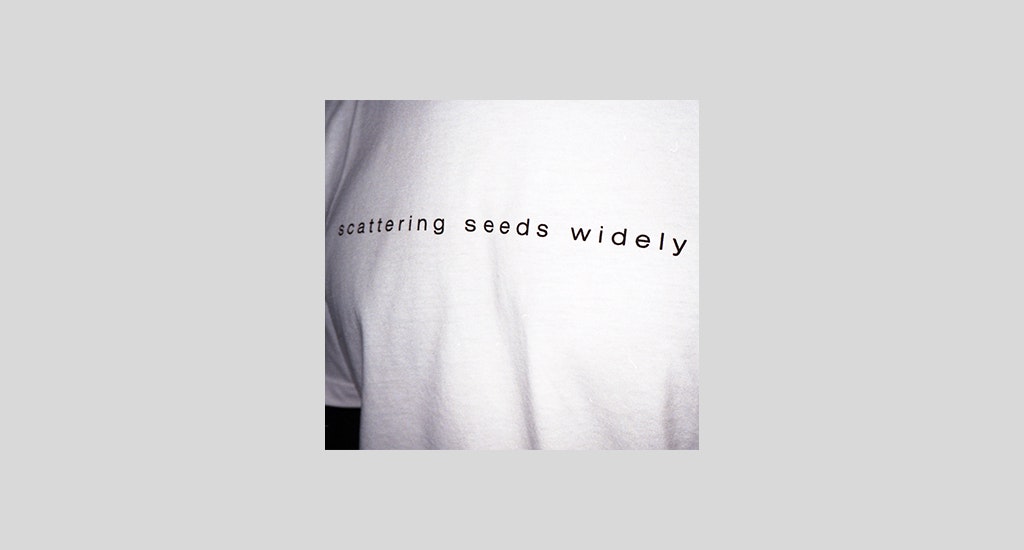
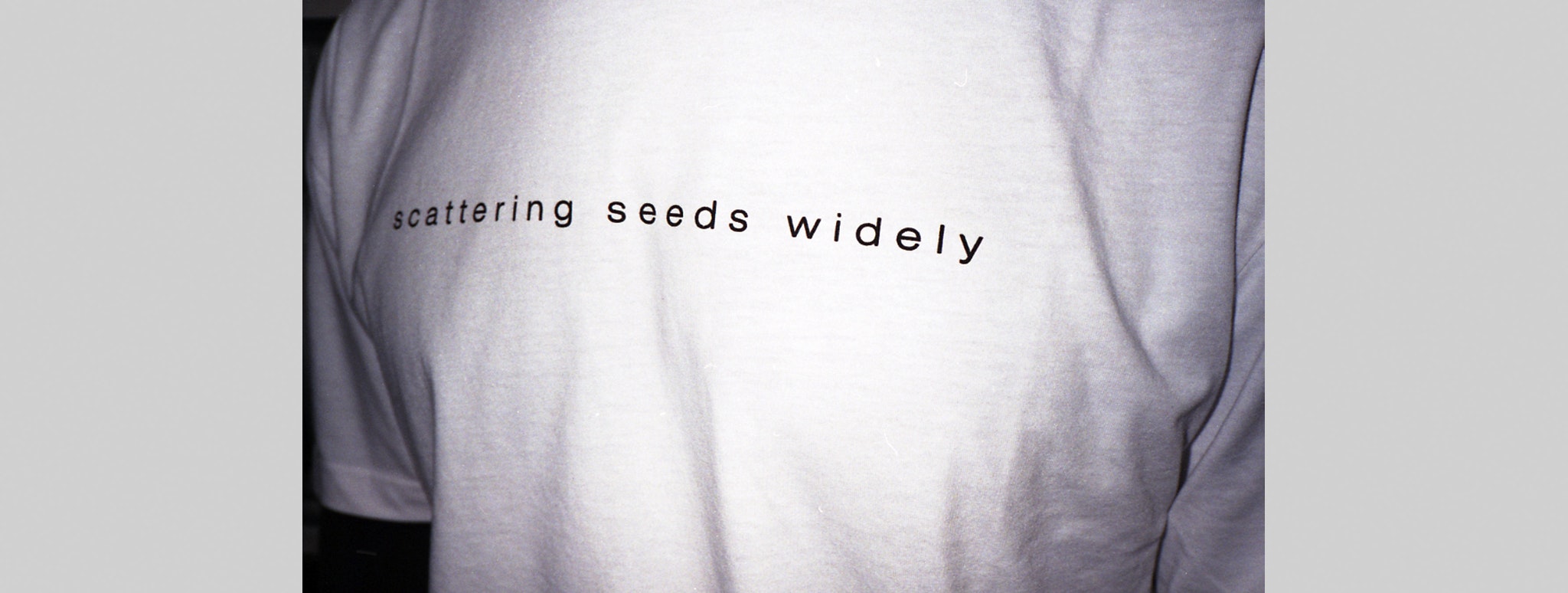
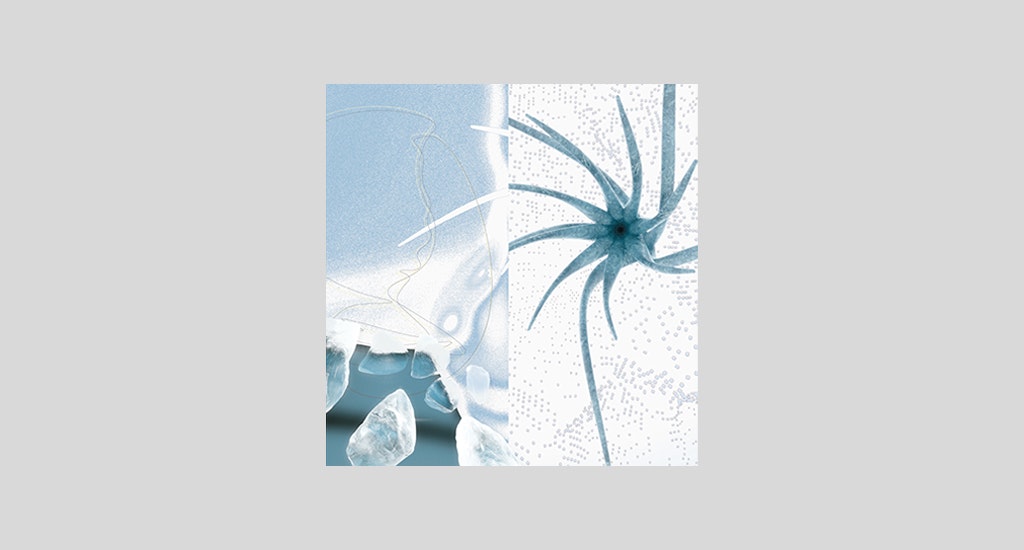

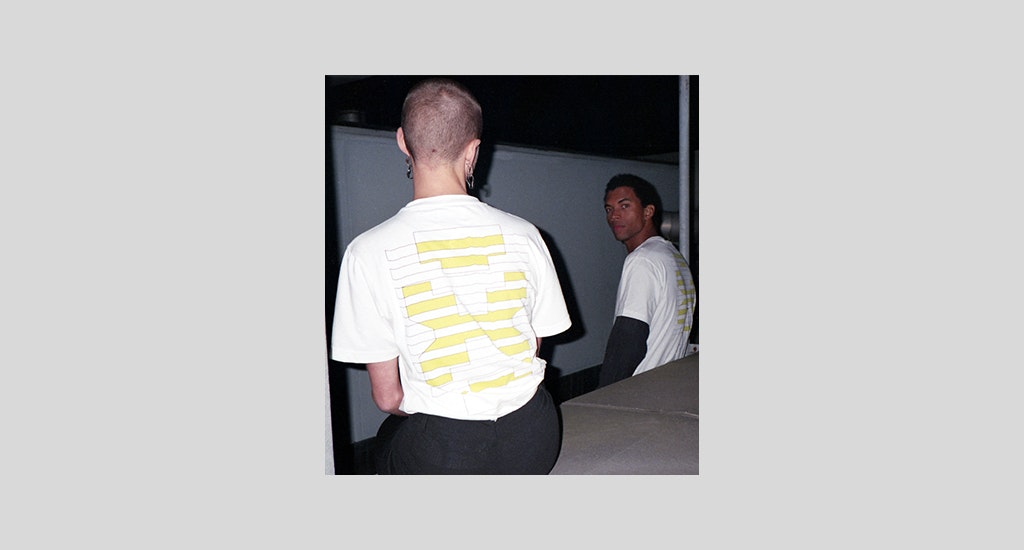
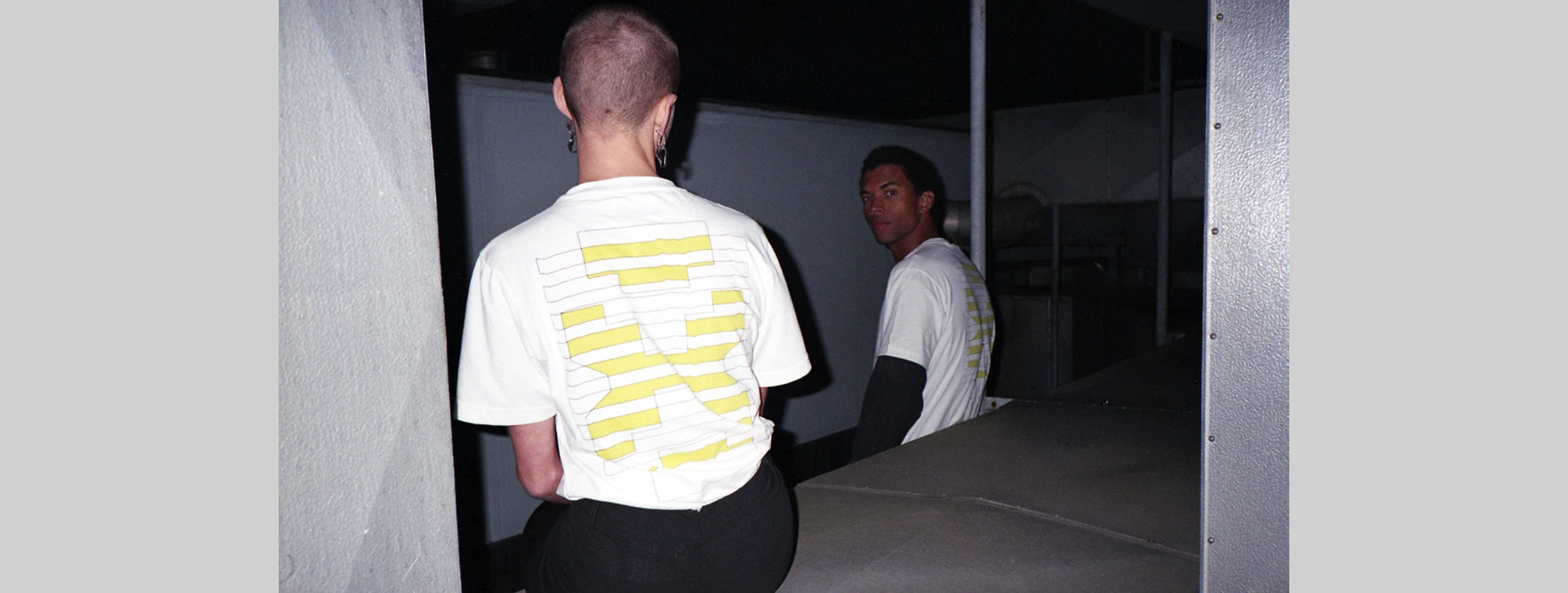
scattering seeds widely
Sjoerd de Ridder x Nicole Martens: Broadcasting Across Time and Space
It was a pleasant coincidence to discover that Sjoerd de Ridder, the graphic designer responsible for Future Intel’s visual identity, shared many of the same interests and influences as Nicole (and I) did. Both Sjoerd and Nicole share a love not only for the early internet, but for the specific graphic web- and OS- aesthetics that accompanied it. They also share a deep appreciation for the anarchist, DIY spirit of independent music-organizations. Whereas Nicole’s appreciation came from a mixture of a lived experience as a DJ involved in the music scene as well as a strong intellectual agreement she could speak about and describe with specificity and ease, it was an intuitive, integral, and unspoken facet of Sjoerd’s artistry; a part of his inseparable blend of music and graphic design – a connection which could be traced back to his experience organizing underground parties across the Hague throughout the late 2000’s. It was especially these two factors – the chasm between intention and intuition in their approaches towards creation, as well as each artist’s personal experience in both the worlds of music as well as graphic design – that interested me about their collaboration. I wanted to understand how they had bridged the divide, but also how, and where they had found common ground. In short, I wanted to understand the nature of the collaboration; how each artist had used their differences to accentuate the other’s work, especially given that Nicole and Sjoerd had so many other particularities in common.
Whereas Nicole is interested in layers of meaning; in intuitively translating the nuances of her thoughts and artistic decisions into language in order to understand and unravel their intricacies, Sjoerd is guided not by language or symbolism, but by both intuition as well as an impulsive, playful experimentation with things as they exist within the visual world. Similarly to the approach of Future Intel, there must be a sense that something ‘feels right’; the pool of references available is fair game. In this context, references are neither symbols, nor tools to create meaning through history, but have the opportunity to simply be as they appear: a visual language that can be interacted with at face-level; a visual language that imparts not context but feeling. This, of course, is an approach to art that can be equally as effective. It gives it the chance to be freer and more innocent, not in danger of being bogged down by discourse or fear of false interpretation. Ultimately, despite their differences in engaging with context, both artists are guided by a respect for intuition; they provide space for experimentation and play within their practices, though they may arrive at the same conclusion through different pathways.
With the qualities of these different approaches in mind, it was interesting to learn what Sjoerd had been inspired by for his designs for Future Intel. The colors of the station – grey and purple –reference the blue-and-white Windows error screen as seen through the rounded screen of an old OS, the artist-covers used on social media, which display the photograph sent in by the DJ beneath a layer of distortion, are a nod to the feeling of a watching a flickering VHS screen, and finally, the logo of Future Intel instils a sense of discovering an emblem of something that has been hidden away; a sense of something esoteric, nostalgic, and simultaneously prophetic about a possible future.
My own interpretation of the shirt created by Nicole and Sjoerd, which features an overlay of both logos on the back, and the line ‘scattering seeds widely’ across the front, seemed to fall somewhere in between these poles of innocence and understanding. I felt that the design powerfully expressed the brazen identity of both stations, just as it hinted towards the sensitivity, warmth, and playfulness that could be found at each. The subtext to both the (literal) definition of broadcasting as well as the metaphor to ecology, however, was originally lost on me. While these paths of meaning seem obvious now, here, my chain of recognition as laid out for the reader: broadcasting is a term used to discuss the transmission of radio and television, but the word itself simply also means to disperse, to share, and spread; to “scatter”. Ideas are frequently discussed using the language of nature – nature being an apt metaphor given its natural chaos, patterns of chance, and cycles of growth; the phrase hints at an understanding that one action – one point of influence – can set off a chain-reaction; evoke change.
Ultimately, the shirt is both playful as well as powerful; intuitive as well as speckled with easter-eggs of symbolism and information (the green tint of the shirt the result of a Photoshop overlay that inverted the combination of Operator-Blue and Future Intel-purple, the sentence on its front both poetic as well as a metaphor for radio that Nicole had felt close to for years). It was a labor of love, just as Operator and Future Intel are to those involved.
You can find them in our shop now!